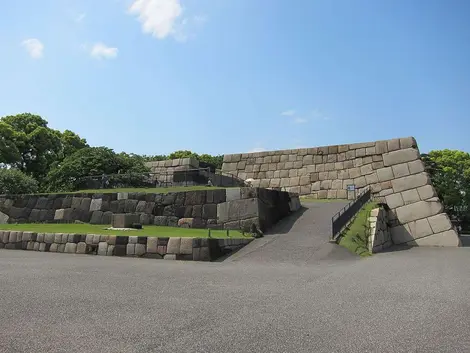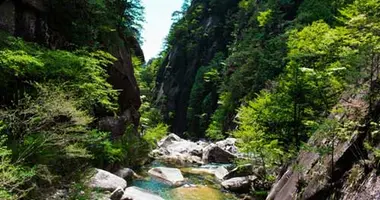Edo Castle, the Heart of Tokyo 江戸城
In the Palace of Shoguns
The present city of Tokyo is built around a heart: the old castle. This heart is nothing but an empty shell still harboring some souvenirs depicting the days of its glory.
A castle and a city
Tokugawa Ieyasu, the first shogun of Edo, ordered the construction of a huge castle in its new capital Edo early 1593. It was completed in 1636. With a perimeter of 16 kilometers, it was the largest castle in the world. Its complex plane is divided into different sections, separated by long staves of several tens of kilometers. Earthworks, involving 300,000 men enabled a moat to be dug and for the castle gain more land from the city of Edo to the sea. The city is well built thanks to the castle, and many neighborhoods still have names evoking gates and esplanades of the castle.
The different sections of the castle were reused thereafter. In 1888, the area Nishinomaru became the imperial palace while Kitanomaru now houses the great hall of Budokan. Marunouchi later became the Tokyo station area and a business center.
The Shogun's palace
The heart of the castle, consisting of Sannomaru (3rd enclosure), the Ninomaru (2nd enclosure) and honmaru (the palace of the shogun) is now a public park. In the past it was dominated by a huge 51 meter tower, the highest of its time, which was reduced by smoke in a fire in 1657 and of which only the stone bases remain. The walls of the moat, 22 meters high, give an idea of gigantism of the place.
The palace itself, now a green esplanade, consisted of Ôomote (official palace), the Nakaoku (intermediate Palace) and Ooku (private palace where the Shogun lived with his seraglio). The palace was destroyed by fire in 1873 and was never occupied by the emperors.
Today only a few buildings of the extraordinary structure survived the fire: guard posts, barracks of soldiers and defense towers. The most interesting is probably the Fujimi Yagura, a tower from which - they say - you could see Mount Fuji on a clear day and is the best preserved of all. It is especially the stone ruins and huge blocks that get attention today. The park is planted with cherry trees and is a charming sight in spring, especially around the Budokan.
From one palace to another
Nowadays , the Imperial Palace is closed to the public and we can see nothing but its bridges: the Ishibashi Seimon, Seimon tetsubashi and the extensive pine park, emblematic tree of power.
Visiting the remains of the castle without doing a bit of research beforehand would be a shame. The place keeps the memory of the finest hours of the shogunate, including the famous episode of the 47 ronin of Ako or disorders of the late Edo period. The palace is full of abandoned Tokyo history.
Recently a group was formed to propose the reconstruction of the Edo dungeon and give the city an emblem of its past as well as a landmark. What do you think?







































